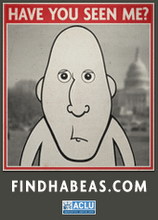Turns out the format of a musical file downloaded to a local computer was the shortest-lived format dominance in popular music history! Was that the fault of MP3? 1998-2005
Given how much the music industry later depended on lossy compression
for downloads and streaming, it is a shocking anomaly to remember how the
Recording Industry Association of America actually tried to block sales of the
first Diamond Multimedia MP3 player in 1998, which itself was just a teaser as
to how much RIAA would train the big guns on Napster two years later (Napster,
the startup who promoted “free” downloading, was formed in the summer of 1999,
before the millenium). Audio buffs sneered at the standardization of MP3,
claiming many true music fans would demand either lossless compression like
WAV, or direct dynamic compression, using pulse code modulation, in digital CDs
or analog LPs. Wired magazine
later pointed out that many millennials and Gen Z youth preferred the sound of
MP3 to lossless compression, because they had grown up with lossy compression.
The magazine called this trend “craptastic,” and pointed out that many boomers
had themselves grown up listening to the Top 40 on tinny, monaural transistor
radios (though few would say they actually preferred that sound to the high-end
stereos they would hear in their college years).
There was a significant
difference between what happened to digital recording as a result of the CD’s
introduction in the 1980s, and what happened to audio recording 15 years later
due to the ubiquity of MP3. Digital recordings with high-bit-rate sampling
could offer superior sound quality, but the turn to CDs also indirectly
encouraged sloppy studio recording and mastering, favoring a bright and tinny
sound, as we discussed in Chapter 9. Some die-hards might say that all audio
compression should be kept to a minimum, but careful lossless compression taking
place in the studio could lessen the overall dynamic range and impose a certain
amount of gain reduction (some proponents of modern classical music, and of
loud-soft progressive bands like King Crimson, would say that even reducing the
dynamic range is compromising the integrity of the artist).
In moving to lossy
compression like MP3, the goal was different – reduce the overall size of a
music file to make it storable on a local computer, or to optimize the
bandwidth when streaming music over the Internet. The encoder removes data
judged to be inaudible or irrelevant, and at high encoding rates like
320Kbits/sec and above, most people would not be able to tell the difference in
the source. However, lossy compression introduces noise, distortion, and loss
of detail. What is worse, each time a lossy file is sent back and forth among
music editors, the file degrades, which is why most music editors insist on
lossless files. So the CD was blamed for lower sound quality due to poor
recording decisions made in studios in the 1980s, while MP3 reduced sound
quality because quality was overtly sacrificed to improve file size. Many
compressed files of the early 2000s debuted with bright and brassy bands like
Foster the People, fun, and The Strokes, so it was often hard to tell the
difference (which is not intended as a slur on the artist).
What the arrival of MP3
delivery really underscored is that most people would prefer the convenience of
a fully digitized music library, available through cloud services, to a local physical instantiation of music in any format,
which carried environmental costs alongside the simple reality of taking up too
much space. The eventual revival of the LP, often sought out by people who did
not even own turntables, showed that many people wanted the comfort of an art
object in addition to an endless playlist. But the closing years of the 20th
century were the first time people became aware that digitization eventually
would mean the availability of the entire music resources of the Library of
Congress in an immediate form on handheld platforms. It wasn’t until the
arrival of apps like Pandora and Spotify in the 21st century that
fans realized a potential downside: if the artistic output of millions of
musicians was on tap all the time, how would music fans separate wheat from
chaff? Labels attempted to revive interest in physical formats in 2000-01
through new digital platforms like Audio DVD and Super Audio CD. In 2004-05, a
few artists like Fiona Apple, Son Volt, and Bruce Springsteen tried a “Dual
Disc” flippable CD that had audio CD on one side and DVD on the other, though
streaming would eventually make both CDs and DVDs all but obsolete. Instead, the
biggest news of 2001 was Apple’s debut of the iTunes library and the iPod
portable platform.
While the full arrival of
sampled and reassembled music would have to await the debut of better Mac
ProTools, EDM music at the turn of the millenium already was feeling the impact
of DJs who made as much or more use of laptops than turntables in their
performances. This was not the simple song-sampling of earlier hip hop and pop
tunes, or straight-out lip synching that landed Milli Vanilli in such trouble,
but the full creation of new sounds using found and repurposed sounds from
musical instruments and from the street itself. Musical purists would later
grumble that they didn’t pay good money to see two faux-musicians drag laptops
on stage, but Talking Heads founder David Byrne, in his seminal book How Music Works, said that there is no inherently greater
authenticity or legitimacy between Alan Lomax dragging tape recorders to the
Deep South to chronicle the blues masters, and newbie nerds creating music
directly from the laptop. Byrne’s view would become accepted wisdom by the
second decade of the 21st century, but not without howls of protest
from many, including the old-timey instrument community.
In the final six months of
1999, individual artists and the music industry itself felt a sense of
anticipation and palpable change awaiting the new millenium. (A stickler might
say that a new millenium begins in 2001, but medieval pundits a thousand years
ago considered the millenium to have begun in 1000, and the vast majority of
modern global citizens felt the same way about 2000.) In the latter half of
1999, David Bowie offered the first downloadable album with Hours. Stephin Merritt encapsulated Tin Pan Alley-style
pop with The Magnetic Fields’ massive three-disc 69 Love Songs. A few
years later, Richard Thompson belatedly followed up with his 1000 Years of Popular Music, ending with a Brittney Spears
cover. Even the somnambulant political activist world showed signs of life,
with the anti-globalization Battle for Seattle offering its own musical
soundtrack.
And 2000 lived up to its
billing. Many bands released defining works during the year – Radiohead’s Kid A, Modest Mouse’s The Moon &
Antarctica, Pink’s debut, New Pornographers’ Mass Romantic, Death
Cab for Cutie’s We Have the Facts, Eminem’s
Marshall Mathers LP, Elliott Smith’s Figure 8. The recording industry was at one of its highest
points in history for sheer numbers of new album releases. Yet the hint of
physical intangibility was in the air, as the recording industry launched some
of its first lawsuits against Napster. The legal actions held a sense of irony,
given that 15 years later, labels would bow to the inevitability of streaming,
which superficially seemed a lot closer to piracy than the downloadable files
targeted in the Napster cases. Metallica lost a good chunk of fans by taking a
more aggressive stance against Napster than did industry groups like RIAA.
Ironically, so many music fans with large servers had set up file-sharing
sites, which updated the shared mixtape to a shared database from which to burn
CDRs, that the actions against Napster only served to drive file-sharing
underground.
What really made the 21st-century
environment so rich was a mutual-support network of like-minded musicians who
helped make musicians’ rosters almost as vast as one would discover a decade
later in the nascent streaming world. In record stores and on web sites
worldwide, multi-band compilations were everywhere, later leading to solo recording
contracts for the better bands. The process of regeneration and rebirth was
larger than either the 1965-66 garage era, or the punk era of the late 1970s. And
this busy activity continued, even as CDs became less profitable for all
concerned. It set the stage for a streaming era where there were too many
musicians for even the most obsessed music fan to hear in one lifetime. (Again,
this was not reflected in singles charts, because indie musicians, with rare
exceptions, did not make these charts. In fact, the Top 40 underwent a major
revision in 1999 to add more hip hop and country, not only to make the charts
more inclusive, but also because there were only a handful of Everclear and
Matchbox 20 types who ever made the list, and a greater participation by hip
hop and country was needed to flesh out a very paltry radio playlist.)
It was fair to point out that
several bands launched in the 2000-01 period moved indie back into a
direct-rock sound, including The Strokes, Yeah Yeah Yeahs, and White Stripes.
Several such bands survive in the 2020s, though it is fair to say that this
mini-wave was the last to place guitar-centric rock in the center of indie.
After that, the genre became indie-pop by default. Later in the decade, bands
like Panic at the Disco!, Paramore, My Chemical Romance, and Fall Out Boy
helped drive the former niche category of emo into a pop mainstream.
Of course, the terror attacks
of Sept. 11, 2001, were bound to play a sobering influence on the millenium
party, but the effect was milder and shorter-lived than the major cultural
shifts of Reagan years. In the month of October following the attacks, major
benefit concerts were held in New York, Washington, Atlanta and Dallas, and
virtually no protests were made against the U.S. intervention in Afghanistan,
as it was perceived at the time as justifiable payback. Lee Greenwood hit the
charts with “God Bless the USA” in October, as did Whitney Houston with her
rendition of “The Star-Spangled Banner.”
What was more disturbing was
the music industry’s willingness to move to self-censorship: Clear Channel
Communications sent out a list of songs “too sensitive” to play, The Strokes
removed the song “NYC Cops” from the U.S. version of their debut album, Jimmy
Eat World changed the name of its latest album from Bleed American to an
eponymous title, and Reprise Records made its odd decision to drop the release
of Wilco’s Yankee Hotel Foxtrot, to make it sound as
though the refusal to release the album had something to do with 9/11 (the fact
that the album was released by an affiliated label, Nonesuch, made the whole
event seem like a misfire). In any
event, the effects were transient, as bands were back to their usual antics in
2002, and by 2003, anger at the invasion of Iraq was felt on both the streets
and in the music industry.
The 2003 preventive invasion
of Iraq sparked transient opposition of a different sort. The invasion on false
pretense had much less justification than U.S. involvement in Korea, Vietnam,
Central America, or even Afghanistan a mere two years earlier. As a result,
protests against the March 2003 invasion were massive and global – and had next
to no effect. Because there was no draft and no long-term commitment of large
numbers of U.S. troops (many advisors stayed for decades after the fact, but
the Iraqi government collapsed within weeks), the protests were not sustained
to any significant degree. And musicians’ interests were just as superficial as
the public’s.
Thurston Moore of Sonic
Youth, in his new role as curator of many musical projects, set up
protest-records.com as a repository for four hours’ worth of protest songs from
dozens of bands (the site was still active 20 years later). Instead of selling
CDs to make money, the site allowed users to download the songs for free, only
asking for donations to antiwar groups. There also were decent political works
from Dan Bern and from moveon.org. In live performances, both Dixie Chicks and
Pearl Jam made significant statements against the Bush administration in the
weeks following the invasion. Given their audience, it was no surprise Dixie
Chicks faced scorn and complaint from the country crowd. As for Pearl Jam, Eddie
Vedder was taken by surprise by the negative reaction from many fans to his
antiwar stance. The latter rise of artists like Ted Nugent and Kid Rock
displayed an ugly truth about the 21st century – the music fan
community could not be assumed to hold a progressive stance on many issues.
Given how many artists asked Republican candidates not to use their music in
later years, it was a safe assumption that many (though not all) musicians came
from a progressive background, but often, their audiences were far more redneck
than they were. The more generic form of disaster aid relief benefit concert
remained strong, however, as events were held in 2005 for victims of the Boxing
Day tsunami and of Hurricane Katrina in New Orleans.
Top 40 charts were by then
given over to a clear majority of hip hop tunes, broken only by country artists
like Gretchen Wilson or Big and Rich. The few indie-style rock bands that were
exceptions, such as Hoobastank, Train, or Creed, tended to have presence solely
within Top 40, and not much existence outside mass-audience charts. Billboard moved
slowly to adding a dedicated “Adult Alternative” chart (it was first published
in print in 1996, but not tracked online until 2008). However, such charts
began fragmenting almost immediately – New Music Express and Album of the Year were excoriated by many for hewing too close
to a mainstream line, while the annual list for the Pitchfork music
site was derided as too hipster. In short, there was a lot of fragmentation in
popular music in mid-decade, even within indie-rock domains.
Nevertheless, a few
“signifier” albums broke through the noise in mid-decade, such as Ben Gibbard’s
double hit of Transatlanticism by Death
Cab for Cutie and Give Up from his
side project, The Postal Service. These albums meant so much to millennials
that when Gibbard toured the two bands on the 20th anniversary of
the dual albums in 2023, concerts sold out everywhere. The irony from many
anniversary re-hashings is that, even as millennials chided boomers for the
multiple reunion concerts of bands like The Eagles and Fleetwood Mac, the bands
of the 1990s and 2000s were selling packaged nostalgia in similar formats by
the late 2010s and the 2020s. In fact, there was almost a standard algorithm
one could use for a reunion, tied to 15th or 20th anniversaries
of a significant album release, or a band’s formation. Oasis, for example,
waited until the 15th anniversary of the band’s breakup to launch
its own reunion.
A significant number of music
consumers responded to the mainstream tedium by diving ever deeply underground,
and a few clever outsider bands responded with a cavalcade of releases. Bands
such as Starving Weirdos, Charalambides, Sun City Girls, Vibracathedral
Orchestra, and Sunburned Hand of the Man released dozens of improvisational
albums on any format imaginable. Not only were very few of these destined to be
streamed at future dates, but the handmade cassettes, CDs, and lathe-cut LPs
were valued as limited-edition pieces of art.
One mid-decade milestone
appeared to be well outside the realms of recorded original music, though it
was an indicator of future media platforms for music development. The first
release of Guitar Hero in the summer of 2005 was one of several rhythm-based
video games allowing users to emulate musical instruments and vie for prowess.
Initially, the games shipped with licensed playlists of songs familiar to many.
Over time, however, gaming platforms became a vehicle for introducing new
songs, as relevant as films or TV shows. Gaming avatars were cited as an
influence when Damon Albarn, lead singer of Blur, created the virtual
cartoon-character band Gorillaz in 2002. Eventually, online multiplayer
environments hosted live events, with rapper Travis Scott being an innovator
for the Twitch network. The evolution would take more than a decade, but gaming
became part of the music user platform in 2005. In the next 20 years,
surreality and virtual environments would seep into popular music with as much
inevitability as streaming.
Coming in three weeks (Sept. 20) - "The Allure of Listening, Chapter 13 - Platforms Define Experiences" - (2006-2012) - As the streaming Godzilla denudes the landscape, the people shout, "To infinity and beyond!"
Copyright 2024 Loring Wirbel



















